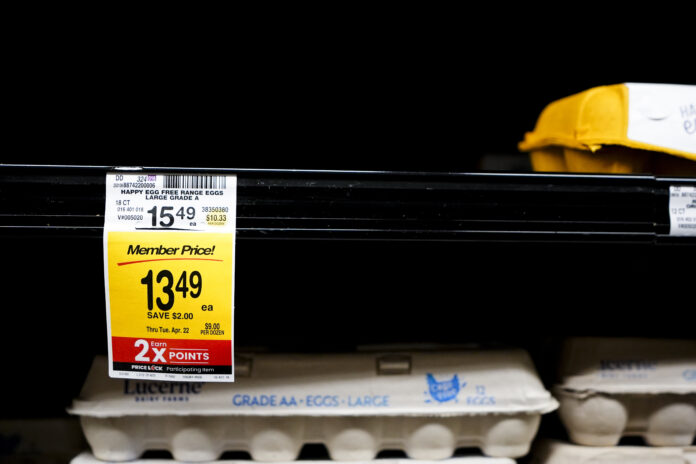Inflation picked up again last month, with rising costs for gas, groceries, and used cars making life more expensive for American consumers.
The latest data from the Labor Department shows that the consumer price index rose 3% in January compared to a year ago, up from 2.9% in December. Inflation has now increased from its 3 ½-year low of 2.4% in September.
This stubborn price growth is likely to reinforce the Federal Reserve’s stance on keeping interest rates high, delaying any further cuts.
Core Inflation Remains High
Stripping out volatile food and energy prices, core inflation rose 3.3% year-over-year in January, slightly up from 3.2% in December. On a monthly basis, core prices jumped 0.4%, the highest increase since March 2024. Overall, inflation spiked 0.5% from December to January, marking the largest monthly rise since August 2023.
The Fed’s 2% inflation target remains elusive, as inflation has hovered above that level for the past six months.
Trump Calls for Rate Cuts Despite Inflation Concerns
Early Wednesday, President Donald Trump urged the Federal Reserve to lower interest rates, calling it a move that should go “hand in hand with upcoming tariffs.”
However, the inflation uptick makes immediate rate cuts less likely, as Fed Chair Jerome Powell has repeatedly stressed the need for more evidence that inflation is cooling.
Will Tariffs Push Inflation Even Higher?
The Trump administration’s tariff policy could further fuel inflation in the coming months. On Monday, Trump imposed 25% tariffs on steel and aluminum imports, with more expected soon.
Economists at Goldman Sachs predict that core inflation would drop to 2.3% by the end of 2025, but tariffs could push it back up to 2.8%. Powell acknowledged Tuesday that tariffs could limit the Fed’s ability to cut rates, though their impact would depend on how many imports are affected and for how long.
Fed Signals No Rush to Cut Rates
Despite three rate cuts last year, the Federal Reserve has hit pause, keeping its benchmark rate at 4.3% after previously raising it to a two-decade high of 5.3%. Powell reiterated Tuesday that the Fed “does not need to be in a hurry” to cut rates further.
With inflation still proving stubborn, the central bank is in wait-and-see mode, meaning relief for borrowers on mortgages, car loans, and credit cards may take longer than expected.




